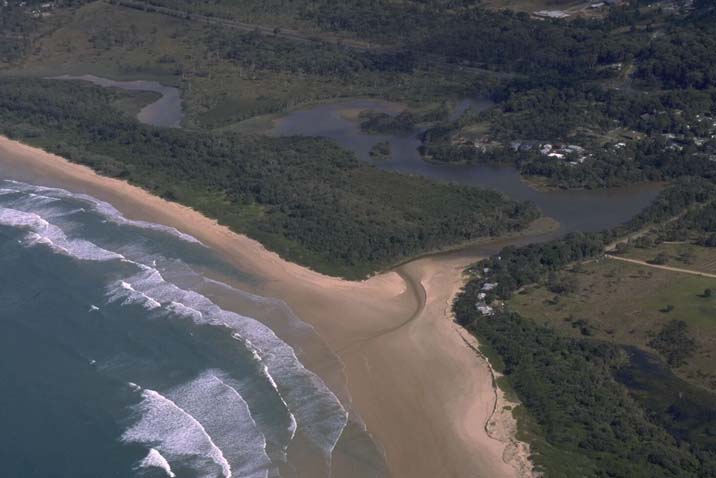Hearnes Lake is situated between Coffs Harbour and Woolgoolga on the New South Wales north coast. It is a lagoon with an intermittently closed entrance.
Water quality report card
As part of our water quality monitoring program we assess the water quality and ecosystem health of an estuary using a range of relevant indicators. We sample a subset of the estuaries located between the Queensland border and Taree every 3 years. The most recent sampling in Hearnes Lake was completed over the 2021–22 summer when 2 sites were sampled on a monthly basis.
This report card represents 2 water quality indicators that we routinely measure: the amount of algae present and water clarity. Low levels of these 2 indicators equate with good water quality.
Algae
Water clarity
Overall grade
The report card shows the condition of the estuary was fair with:
- algae abundance graded fair (C)
- water clarity graded poor (D)
- overall estuary health graded fair (C).
Grades for algae, water clarity and overall are represented as:
- A – excellent
- B – good
- C – fair
- D – poor
- E – very poor.
Go to estuary report cards to find out what each grade means, read our sampling, data analysis and reporting protocols, and find out how we calculate these grades.
Coffs Harbour City Council, in collaboration with the University of New England’s EcoHealth Program, have carried out detailed ecosystem health monitoring in Hearnes Lake. The results of the monitoring program, including a detailed water quality report card, are available on the Coffs Harbour City Council website.
We have monitored water quality in Hearnes Lake since 2009. This table shows the water quality grades for this estuary over that time.
| Year | Algae | Water clarity | Overall grade |
|---|---|---|---|
| 2009–10 | D | E | D |
| 2012–13 | A | B | B |
| 2015–16 | B | D | C |
| 2018–19 | B | C | B |
Physical characteristics
| Estuary type | Lagoon |
|---|---|
| Latitude | –30.13 (ºS) |
| Longitude | 153.20 (ºE) |
| Catchment area | 6.6 km2 |
| Estuary area | 0.1 km2 |
| Estuary volume | 37.8 ML |
| Average depth | 0.4 m |
Notes: km2 = square kilometres; m = metres; ML = megalitres.
Water depth and survey data
Bathymetric and coastal topography data for this estuary are available in our data portal.
Land use
Hearnes Lake receives water from a very highly disturbed catchment. Over two thirds of the catchment has been cleared of vegetation and a lot of this land, which lies west of the Pacific Highway, is used for horticulture. Urban areas comprise around 10% of the catchment
National and marine parks
- Hearnes Creek is situated within Coffs Coast Regional Park.
- Hearnes Creek is part of the Solitary Islands Marine Park.
Community involvement
- Coffs Harbour Regional Landcare provides workshops and volunteer work opportunities along the Coffs Coast.
- There are 22 bushcare and landcare groups in the Coffs Harbour area, including in Hearnes Creek. These groups mainly work within the Coffs Coast Regional Park. For more information go to the National Parks and Wildlife Service Coffs Harbour bushcare and landcare webpage.

Aerial view of Hearnes Lake
Local government management
Local councils manage estuaries within their area unless the estuary is attached to a marine park. Hearnes Lake is managed by Coffs Harbour City Council and the Solitary Islands Marine Park.
The council’s Woolgoolga Region Coastal Management Program webpage has more information available for this estuary.
Threatened species
The joint entrance area Flat Top Point Creek and Hearnes Lake is a significant little tern breeding site.
Loggerhead turtles have also nested at Hearnes Lake Beach.
Read more about the biodiversity in our estuaries.